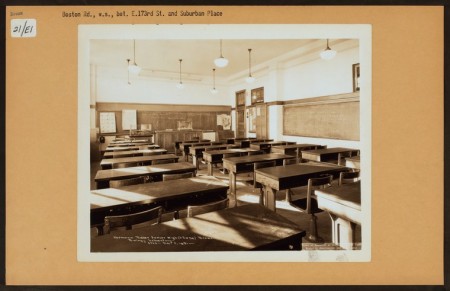As outreach educators in the museum world, many of us dream of taking our programs to large urban school districts in our regions but often have difficulty “cracking the nut” to break into the system. And why not? We have great success with these programs in other schools and populations, so shouldn’t we strive to bring them to the students who could use them most? Whatever our goals, reaching these teachers and classrooms often proves a daunting task, leaving museum outreach educators frustrated and discouraged. It’s a vicious cycle not unlike what people inside the system are experiencing themselves. Here are some ideas for aligning yourself with their needs, goals, and expectations to help break down those barriers:
Be Prepared and Speak the Language
Hopefully you already have some data and testimonials to work with. Comb your most recent evaluations and put together a simple 1-page document to highlight what your program can bring. This will be your foundation, and using this data you believe in your program 100%. If you are not doing this then honestly you have already lost. Use the language of your state department of education and the schools you are targeting. Education trends and terms shift like the wind, so study up on the latest ideas and tailor your language to fit what they are already talking about.
Go in with a Plan
Now, what can you offer to these teachers and students? Having a multi-tiered implementation strategy will help you adjust later when you are finally working with teachers and students. What is your dream scenario of implementation to the extent that you could realistically support a quality program for teachers and students? What sounds a little more realistic based on what you expect to hear back? What is the bare minimum that you could live with and call it a success? Thinking about these three possibilities will help you react to unexpected scenarios later.
Approach from Multiple Angles and Find Allies
Finding an ally inside of the school system and inside schools will probably be the biggest step in the process, and those people might not be who you expect. Larger school systems often have more support positions at school and administration levels including curriculum coaches, literacy coaches, media specialists, professional development coordinators, and PR specialists. Your first friend on the inside probably won’t be a classroom teacher – they are probably too busy to talk to you. Find allies who will vouch for you using your data and your passion for your work.
Expect Setbacks
You will be told “no” a lot. You will be ignored even more. Others will show legitimate interest in what you can offer and realize they do not have time for it later. Things change, a lot. In the History Day world we say “start small” a lot so as to not overwhelm a new teacher. It’s ok for us to do that too. Take this as a challenge to succeed elsewhere.
Be the Reflective Practitioner
You are prepared, you are passionate, you are finding your allies, and you are getting told “no” a lot. Now for the most important part of how we get anything done as museum outreach educators: you are the reflective practitioner. Listen to what your allies, teachers, students, and colleagues are telling you and capitalize on your opportunities. Chances are your program, where it is implemented, looks drastically different from where you have used it elsewhere or maybe what you expected. This is great!
Celebrate and Build on your Successes
Congratulations on implementing your program into a new and tough school! Take a moment to appreciate what students are getting out of the program, but know this is also your chance to build on this success for the future. Be prepared to evaluate your program to gather data from the students and teachers you have been targeting all along with this project. Now you have data straight from the source to share with your new allies, teachers, colleagues, and administrators at these schools. This is your next step for building the future!






